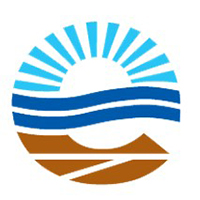Back
Claim Credit Verification Code: 2026
One (1) Hour Case Study
Erosion and Sediment Control
Environmental Protection Techniques When Working in Water - Case Studies Cited from Across the UK
Wednesday, February 26, 2025
10:50 AM – 11:50 AM ET
Location: E10C
CE: 1 PDH
Level of Presentation: Intermediate
.jpg)
Leela O'Dea, BSc MSc CEnv C.WEM MCIWEM (she/her/hers)
Technical Director
Co-founder of Frog Environmental
Barton under Needwood, England, United Kingdom
Presenter(s)
Working in, near and over water represents a unique set of challenges for the project delivery and has the potential to impact the bed and banks of a water body, cause pollution and present a biosecurity risk from the transfer non-native species.
The talk will explore a broad range of techniques and solutions including the innovative application of bubble curtains to control sediment transfer and reduce the risk of environmental damage when working in inland and coastal waters.
Examples and experiences will be shared from the UK based on real life case studies, covering estuarine & coastal works, river restoration and bank protection, stream realignment and dredging, reservoirs and lakes.
Participants will gain knowledge of the environmental risk and unique challenges when working in water. Early design considerations, limitations of techniques and solutions in this environment and a guide to their capital and operational cost.
Full Abstract: Working in, near and over water represents a unique set of challenges for project delivery and has the potential to impact the bed and banks of a water body, cause pollution as well as present a biosecurity risk from the transfer non-native species.
To develop a pollution prevention plan there is an implicit need to understand the scope of the project, proactively engaging with the designer, contractor and other stakeholders in the planning phase to ensure that the constraints and environmental risks are adequately considered. The potential for sediment pollution will depend on many factors such as flow and depth of water, size of sediment, location and likelihood of disturbing sediments. The environmental risk will depend on the season in relation to fish spawning and migration or passage, mammal presence and susceptibility, temperatures and the effectiveness of any containment measures.
The talk will review practices and materials with respect to their performance and limitations for sediment control. This will include isolation techniques such as coffer dams, aqua dams, rock bags, over-pumping, flumes and by-pass channels, as well as containment measures such as geotextile floating or fixed curtains and bubble curtains.
Examples and experiences will be shared from the UK based on real life case studies, covering estuarine & coastal works, river restoration & bank protection, stream realignment & dredging, reservoirs and lakes. This will include how to manage muddy water in the containment area and consider how the temporary measures are removed to avoid the release of a concentrated plume of sediment.
As the latest innovation a more in depth review of the use of bubble curtains will be provided, discussing the multiple environmental protection applications including sound reduction, aeration, oil and sediment containment. How bubble curtains work, the factors that influence performance, airflow and compressor requirements. How and where they can be deployed, operation and performance figures.
The talk will explore a broad range of techniques and solutions including the innovative application of bubble curtains to control sediment transfer and reduce the risk of environmental damage when working in inland and coastal waters.
Examples and experiences will be shared from the UK based on real life case studies, covering estuarine & coastal works, river restoration and bank protection, stream realignment and dredging, reservoirs and lakes.
Participants will gain knowledge of the environmental risk and unique challenges when working in water. Early design considerations, limitations of techniques and solutions in this environment and a guide to their capital and operational cost.
Full Abstract: Working in, near and over water represents a unique set of challenges for project delivery and has the potential to impact the bed and banks of a water body, cause pollution as well as present a biosecurity risk from the transfer non-native species.
To develop a pollution prevention plan there is an implicit need to understand the scope of the project, proactively engaging with the designer, contractor and other stakeholders in the planning phase to ensure that the constraints and environmental risks are adequately considered. The potential for sediment pollution will depend on many factors such as flow and depth of water, size of sediment, location and likelihood of disturbing sediments. The environmental risk will depend on the season in relation to fish spawning and migration or passage, mammal presence and susceptibility, temperatures and the effectiveness of any containment measures.
The talk will review practices and materials with respect to their performance and limitations for sediment control. This will include isolation techniques such as coffer dams, aqua dams, rock bags, over-pumping, flumes and by-pass channels, as well as containment measures such as geotextile floating or fixed curtains and bubble curtains.
Examples and experiences will be shared from the UK based on real life case studies, covering estuarine & coastal works, river restoration & bank protection, stream realignment & dredging, reservoirs and lakes. This will include how to manage muddy water in the containment area and consider how the temporary measures are removed to avoid the release of a concentrated plume of sediment.
As the latest innovation a more in depth review of the use of bubble curtains will be provided, discussing the multiple environmental protection applications including sound reduction, aeration, oil and sediment containment. How bubble curtains work, the factors that influence performance, airflow and compressor requirements. How and where they can be deployed, operation and performance figures.
Learning Objectives:
At the conclusion of this presentation, attendees will:
- Understanding the broad environmental risks when working in, near or over water and how to put measures in place to protect the environment.
- Delegates will come away understanding the hieracrical approach of managing sediment in water, new ideas and techniques which could be adopted in future designs or activities.
- Practical understanding of bubble curtains to control sediment, a list of factors that need to be considered to determine their suitability for the site and how they may be deployed.

.jpg)


